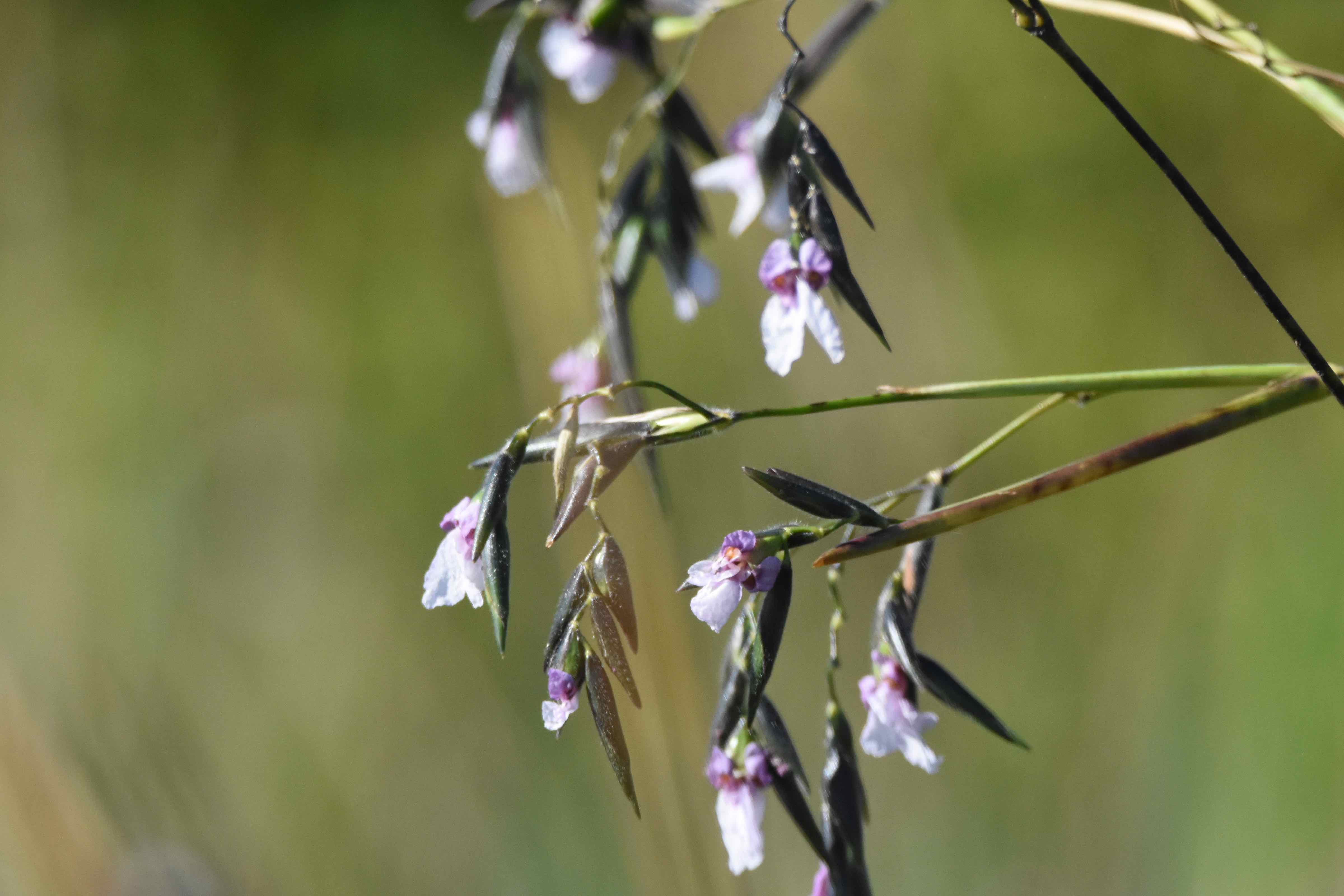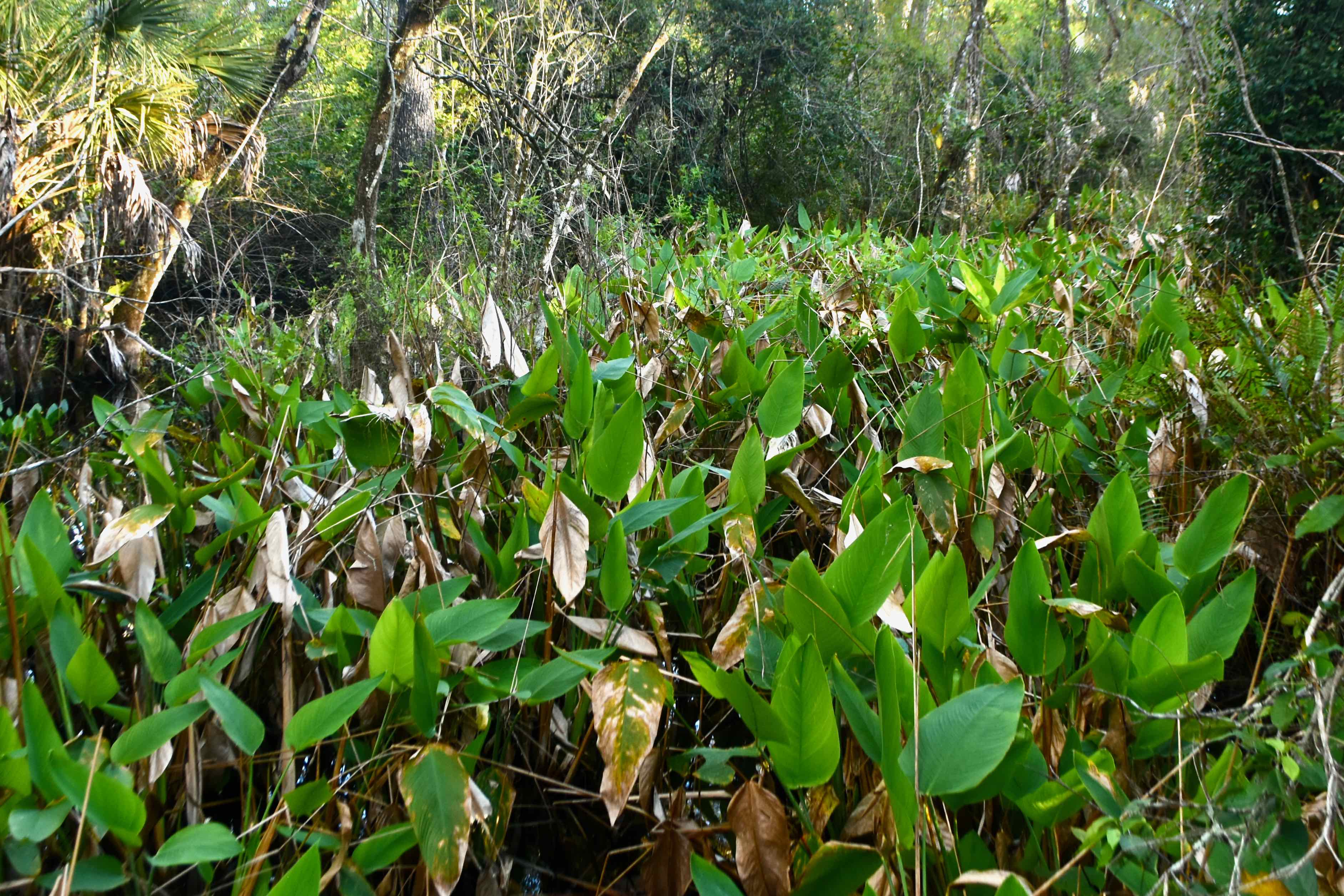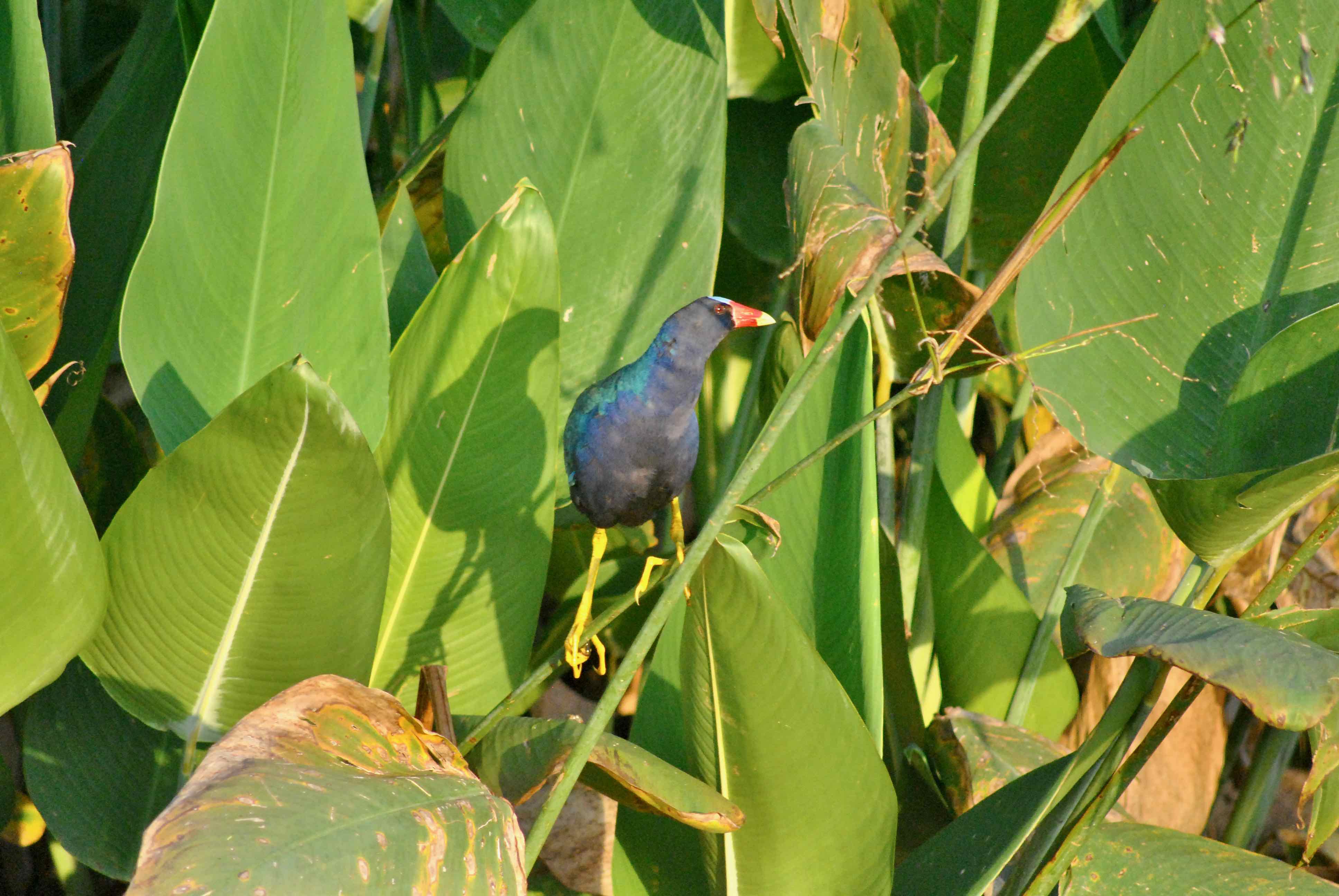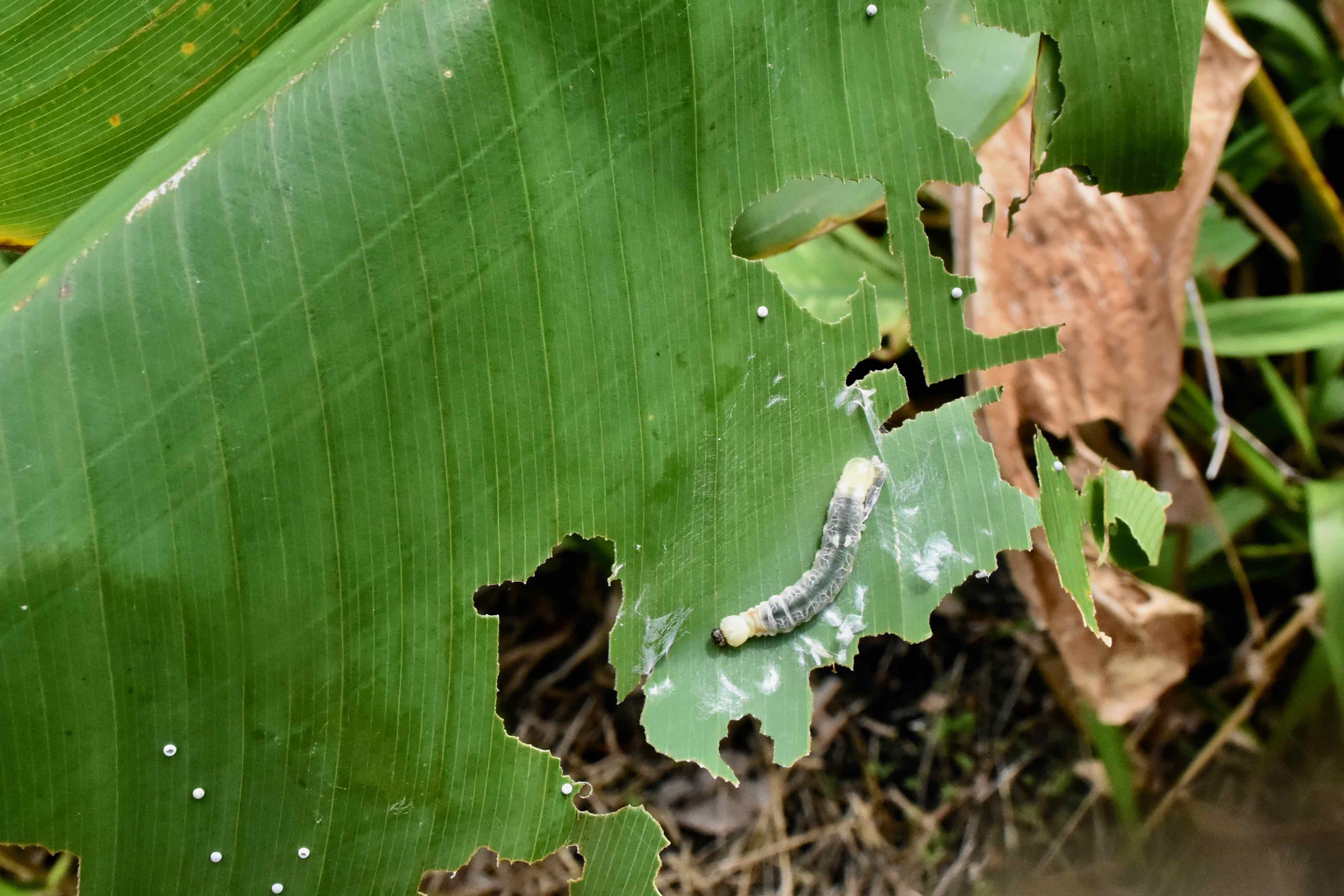
Fire flag, photographed at Green Cay Nature Center, Boynton Beach, Palm Beach County, in January 2017.
If you're looking for purple gallinules, first look for fire flag, Thalia geniculata. Fire flag seeds are a favorite of the bird, and you’ll often find gallinules doing a kind of high-wire act on the flower stalks to get them.
Fire flag is native to Florida, found throughout most of the Peninsula and a few Panhandle counties. It is a wetland plant, with large, lance-like leaves and produces purplish flowers on top of long stalks during the summer and fall. Besides acting as magnets for gallinules, fire flag is host to the Brazilian skipper butterfly; adults lay eggs on the leaves, which are later eaten by the hatched caterpillars (see photo, bottom right).
Fire flag is also called alligator flag, bent alligator flag and swamp lily. Alligators often hide themselves among fire flag stands, the shaking leaves acting as signals when a gator is moving about. Fire flag is found in Georgia, Mississippi and Louisiana in the U.S., and in the Caribbean, Mexico, Central America, South America and western Africa.
Fire flag typically reaches 3 to 6 feet in height, taller than it is broad, but capable of forming large, dense patches. It can hit 10 feet. Fire flag has starchy, underground stems called rhizomes that are characteristic of its family and help to spread the plant. It grows in shallow water, or in wet, poorly drained soil.
The Seminoles used parts of the plant for food. One study done in the the 1950s didn't elaborate on exactly how or what parts of fire flag they used but later work found that much of the plant was eaten, especially in time of war. Other cultures used the plant in other ways. In Africa, the stems were used to make baskets. In Jamaica, parts of fire flag were used to neutralize poisons, and in Brazil, the rhizomes were used on sores as an antiseptic. The inner portions of the roots are edible but have a "swampy" taste to them, according to our favorite Florida forager. A better way to use fire flag, he says, is to wrap food with the leaves for cooking, much like banana leaves are used.
Fire flag is grown commercially, and landscapers use it in water gardens and along the edges of ponds and lakes. Fire flag is a member of the arrowroot family, Marantaceae, along with bananas and golden canna. Other common names and spellings include: fireflag, fire-flag, alligator-flag and alligator flag.
Green Cay Nature Center



